Baeza is a city in the Andalusian province of Jaén whose historic center was incorporated in 2003 into the UNESCO World Heritage Site. Among its most outstanding monuments is one that is especially curious because it is not in a museum but in the central Plaza del Pópulo:a female statue that decorates the Fuente de los Leones and that, according to tradition, represents Imilce, the wife of Aníbal Barca .
The fountain consists of a modest pool supplied with water by four small sculptures of lions (although two may be oxen). It seems that these figures come from the archaeological ruins of Cástulo, from where they were moved at the beginning of the 16th century. Cástulo, located about thirty kilometers away, was an Ibero-Roman city that we will talk about later. The fact is that above the beasts stands the aforementioned statue, considered to be from ancient times and a portrait of the Iberian woman whom the famous Carthaginian general married.
However, that chronology is currently in doubt. The archaeologist Teresa Chapa Brunet, who has participated in various excavations throughout the province and is a specialist in the Iberian world (she has even published a study entitled Iberian Sculpture. Iconographic, technological and historiographical study ), she believes that it is rather a work several centuries later in style and material. In fact, the head is a replacement made by local artist José Gálvez Mata in the sixties, since the original was destroyed during the Civil War.
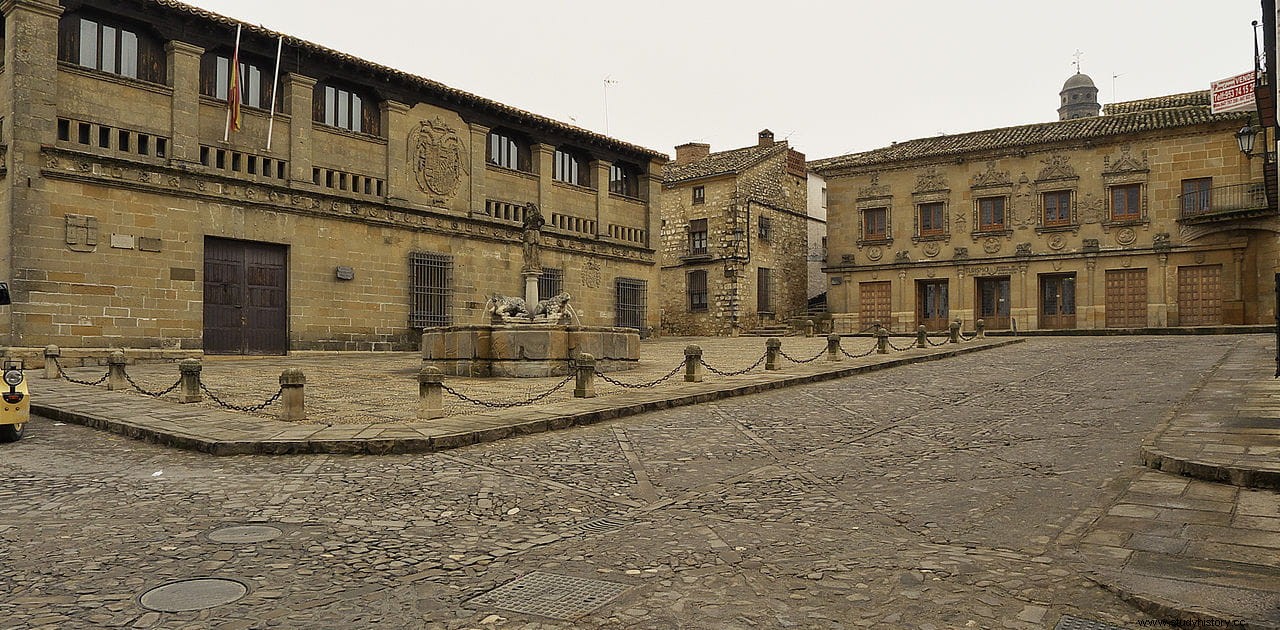
That is why the testimonies do not agree. In her book Memories and beauties of Spain , Francisco Pi y Margall, who in addition to being a politician was also a historian, described that corner of Baeza in the 19th century saying that «... he sees in the middle of a square the figure of a Cibeles appear over the sea from a modern fountain between four lions» . But in 1677 Francisco de Torres had left a description of the fountain according to which it was not adorned with that sculptural group but with a ball topped by a cross; this was replaced by the statue already in the nineteenth century, when romanticism wanted to identify it with Imilce.
And who was Imilce exactly? We do not have much biographical information about her due to the scarcity of sources. Roman historians hardly dealt with this character, so much of what is attributed to him is more part of legend than reality. In his work Ab urbe condita , Tito Livio limits himself to mentioning it in passing:«Cástulo, strong and noble city of Hispania and so closely linked to the Carthaginians that Hannibal's own wife was from there, however it went over to the Romans» .

For his part, the poet Silius Italicus wrote a history of the wars between the Romans and the Carthaginians entitled Púnica and, in his third book, dedicated to the victories of Hannibal, he narrates his relationship with his wife; for example, her farewell between both of her when he prepares from her to her famous campaign, putting in her mouth:
Cástulo, we said, was a city located about five kilometers from what is now Linares, in the Alto Guadalquivir, at the foot of the Sierra Morena. The so-called Saltus Castulonensis, a transit site, as attested by Pliny the Elder , because it communicated the plateau with what the Romans, after their victory in the Second Punic War, were going to baptize as Hispania Ulterior, a province that covered more or less the Andalusian territory (at that time, the dominion of the peninsula was limited to the Mediterranean coastal strip, extending that province towards the northeast in Hispania Citerior).
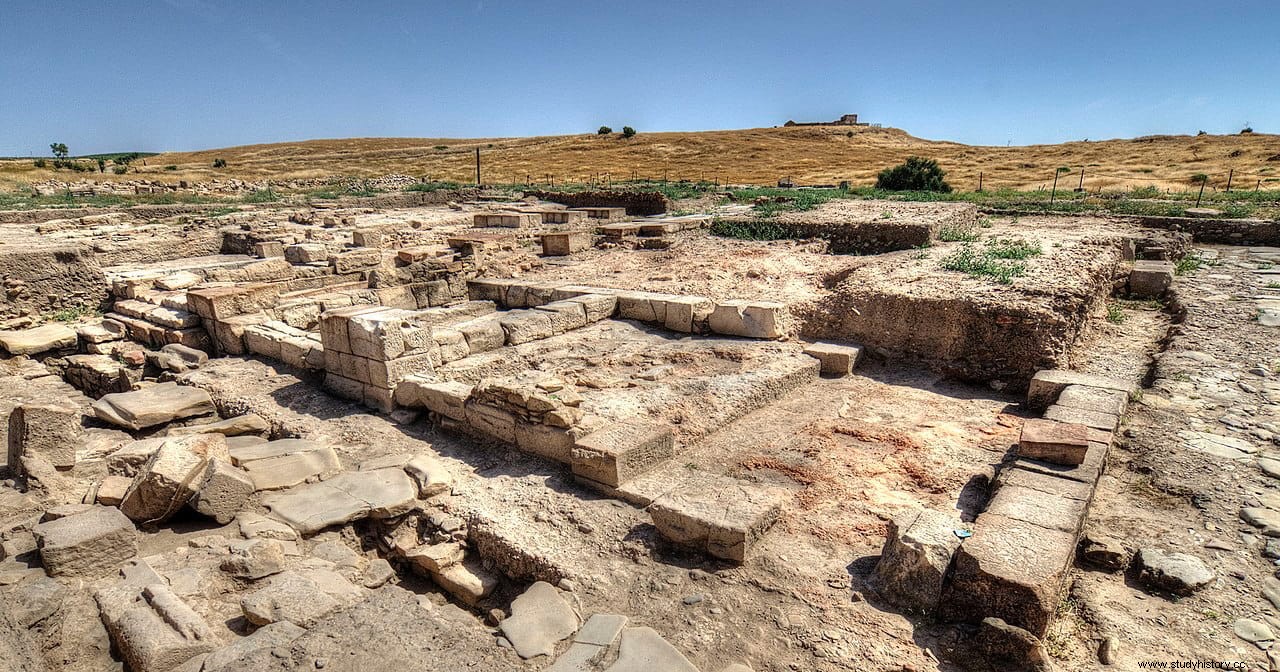
Inhabited at least since the 3rd century BC, although built on a Neolithic settlement, the rich mining of the region made it one of the centers of Tartessian culture. However, at the time we are interested in, it was the capital of Oretania, the area where the Oretani culture developed, which ranged from the center-north of the current province of Jaén to the southern half of Ciudad Real and the western part of Albacete. The abundance of copper, lead and silver - it minted its own currency - first attracted Greek and Phoenician merchants, but other foreigners with more ambitious goals soon arrived.
They were the Carthaginians, who in full expansion for the domain of the western Mediterranean had been defeated by Rome in the First Punic War, losing their territories in Sicily, Corsica and Sardinia, finding an alternative in the rich south of Hispania. It was Amílcar Barca who began the conquest in the year 237 B.C., followed by his son-in-law Hasdrubal the Beautiful when he passed away in 228 B.C. fighting in Helike (Elche?) precisely against the Oretanos. Classical sources (Strabo, Polybius, Claudius Ptolemy...) testify to the tenacious resistance offered by them.
However, and despite the defensive difficulties offered by their oppida fortified on high ground, in the end they could no longer maintain their reluctance to submit to the Punics. Asdrúbal agreed to peace with the Hispanic peoples and, thanks to the classic system of voluntary hostages to ensure it, extended the border to the northeast, acting as limes natural river Iberus (Ebro). But he also lost his life, in his case killed by a servant of Tagus, king of the Olcades, a Celtiberian people (the monarch, by the way, was crucified for it).
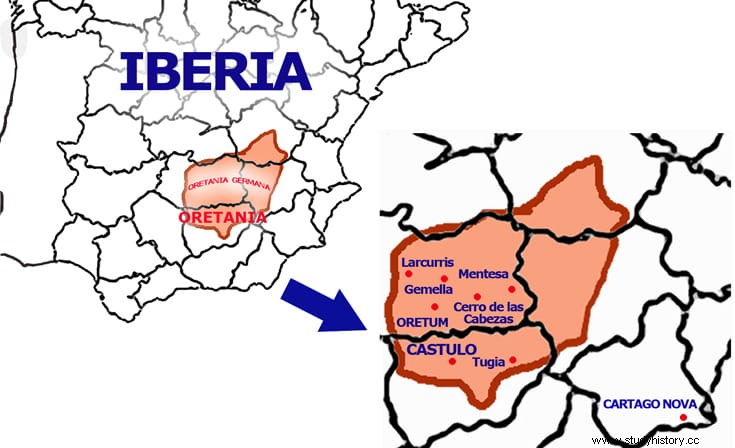
Command then fell to Hannibal, Hamilcar's heir, who met with suspicion from all those who had agreed with Hasdrubal, fearing that the status quo change and become subdued, given the violence with which the African troops were being used. The situation was saved diplomatically:if Amílcar and Asdrúbal had set an example of strategy by blood by marrying Hispanic princesses, Hannibal promised to do the same and the chosen one was Imilce, the daughter of the Oretano king Mucro.
Silius Italicus assumes that she was a name of Greek origin on her father's side, since the monarch is also called Castalius of Cirra (so her family would come from Phocis) and connects her with the nymph Mirice. But current historians such as Gilbert Charles-Picard see a Semitic-Punic etymology in the name ("the protégé of Melkart"), so although it is possible that she had a Hellenistic education, perhaps she was not called that and Imilce was the grace of the daughter of Amílcar -wife, then, of Asdrúbal-. Even the H was a Roman Latinizing addition, the real name being Imilce.
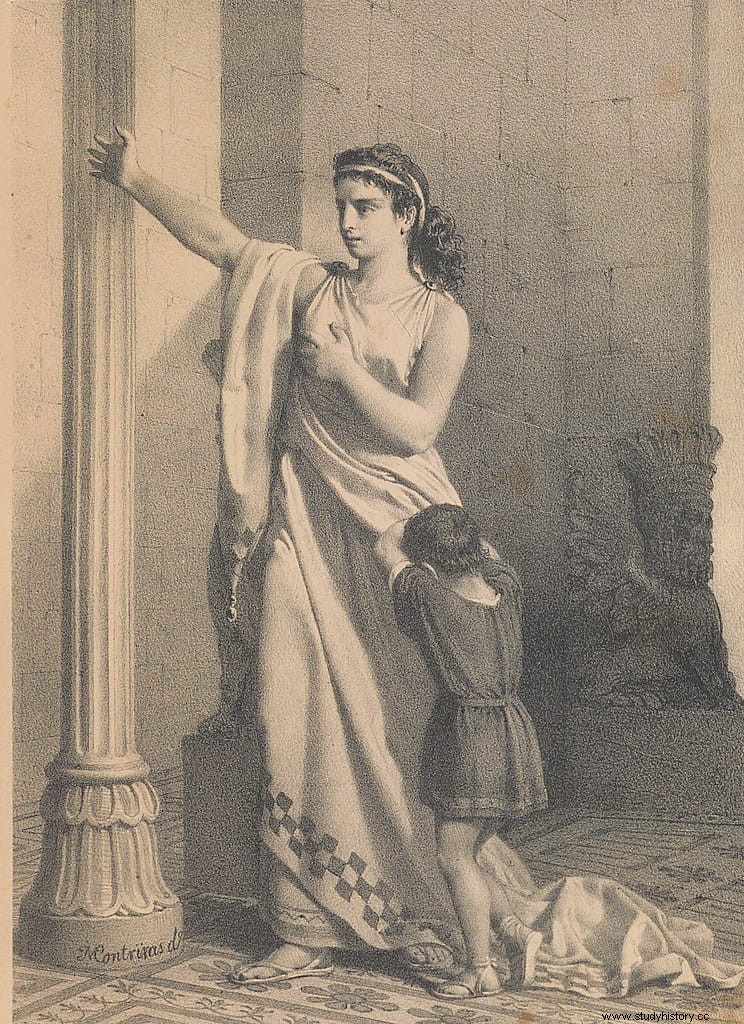
The marriage took place in the spring of 221 BC. (or perhaps the next) in the temple of Tanit that was in the city of Qart Hadasht, better known by the name that the Romans would give it, Cartago Nova (current Cartagena, founded by Hasdrubal). As much as the legend assures that love between the two spouses really arose -today a theatrical recreation of the alleged infatuation and marriage is celebrated in Cartagena-, when they met during a festival in the sanctuary of Auringis (Jaén), it was more well of a political marriage and it would prove the fact that, apparently, Hannibal barely paid attention to his new wife. And it is that convulsive times were approaching and allies were needed for the imminent Second Punic War.
The Romans, who had also embarked on an ambitious expansion, were unwilling to allow Carthage to resurface and the Iberian Peninsula loomed as the first battlefield, so it was important to Hannibal to secure his position there. To do this, after a hard siege, he took Sagunto in 219 BC. and Rome declared war the following year. The Carthaginian's idea was to bring hostilities to Italy itself, so he began to organize a campaign in that direction. We have already seen in Silius's poem how Imilce had to resign herself, against her will, to waiting for him.
That insistence on going with her husband would not fit with a loveless marriage, although in this story everything is conjecture, as you can see. In any case, she was not alone because by then they had a son, presumably conceived in Saiti (Játiva, where the castle still has a balcony called Mirador de Imilce) during the siege of Sagunto. There is no record of what his name was, since neither Tito Livio nor Polibio nor Apiano mention it and only Italic does. If some legends point out that he could have been called Haspar (or Aspar), others believe that he was Hamilcar, since there was a custom of calling the children after his grandfather. Haspar, however, is the most common in the traditional historiography of the Modern Age.
After a family visit to the temple of Melkart in Gádir (Cádiz) to ask for her favor, shortly before the expedition set off for the Pyrenees, mother and son embarked for Carthage, since Hannibal did not want to leave them unprotected. Some historians consider that this version is nothing more than an imitation of what Pompey would later do by sending Cornelia, his wife, to Lucca during the civil war against Julius Caesar. That is why it is also said that Imilce and the child did not go to Carthage but to Qart Hadasht (which, let us remember, was New Carthage, hence a possible confusion), under the custody of the Barca.
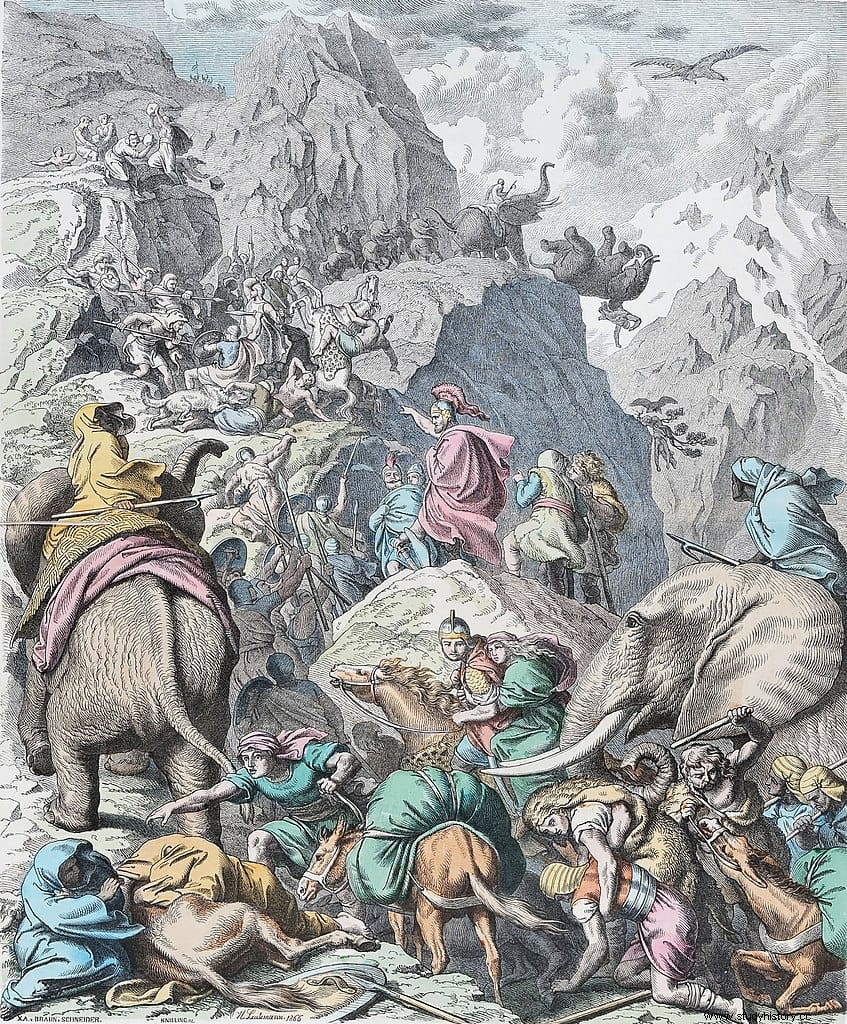
If the first is correct, it is ironic that that adopted homeland ended up being much more dangerous than Hispania, since it was about to cost the little boy his life, according to Italico:Hannón, the political rival of the Barca, proposed his sacrifice to the god Baal Hammon to obtain the favor of the gods in war. Imilce, desperate, implored the Suffetes to prevent it and even sent a messenger to her husband, who finally managed to prevent it by promising to immolate a thousand enemies in return. The same story is told on stage in Cástulo.
It is unknown that it belonged to Imilce, except that her death came to her young, around 214 or 212 BC, and with it that of her son because the cause was a plague epidemic. It has also been theorized that she was against the war against Rome and that is why Hannibal did not want her by her side on the transalpine expedition. Hence, having returned to Cástulo, she would not have died but she remained hidden there until the arrival of Scipio the African , favoring that the oretanos went over to her side, as Tito Livio told.
And it is that, meanwhile, her husband was still fighting in Italy, where the consul Quinto Fabio Máximo had managed to immobilize him based on skirmishes, avoiding open confrontation, without the Carthaginian Senate sending reinforcements to break the impasse . That same year, the Celtiberian tribes began to abandon the alliance with the Punics to side with the Romans in exchange for promises of privileges, leaving the three Carthaginian armies separated from each other and in a delicate situation.
Cástulo was no exception and, as we said, he signed a treaty with Scipio, remaining under the Roman orbit ever since. And here we must mention another version, according to which Imilce, faced with the contempt she experienced in Carthage on the part of the leaders because of the circumvention of the frustrated sacrifice, decided to return to Hispania, to her hometown, where she died, well of the fatal epidemic, or for other reasons. According to that legendary vision, she was buried right there, under the Fountain of the Lions, the statue of her being her funerary portrait; we have already seen that no.
